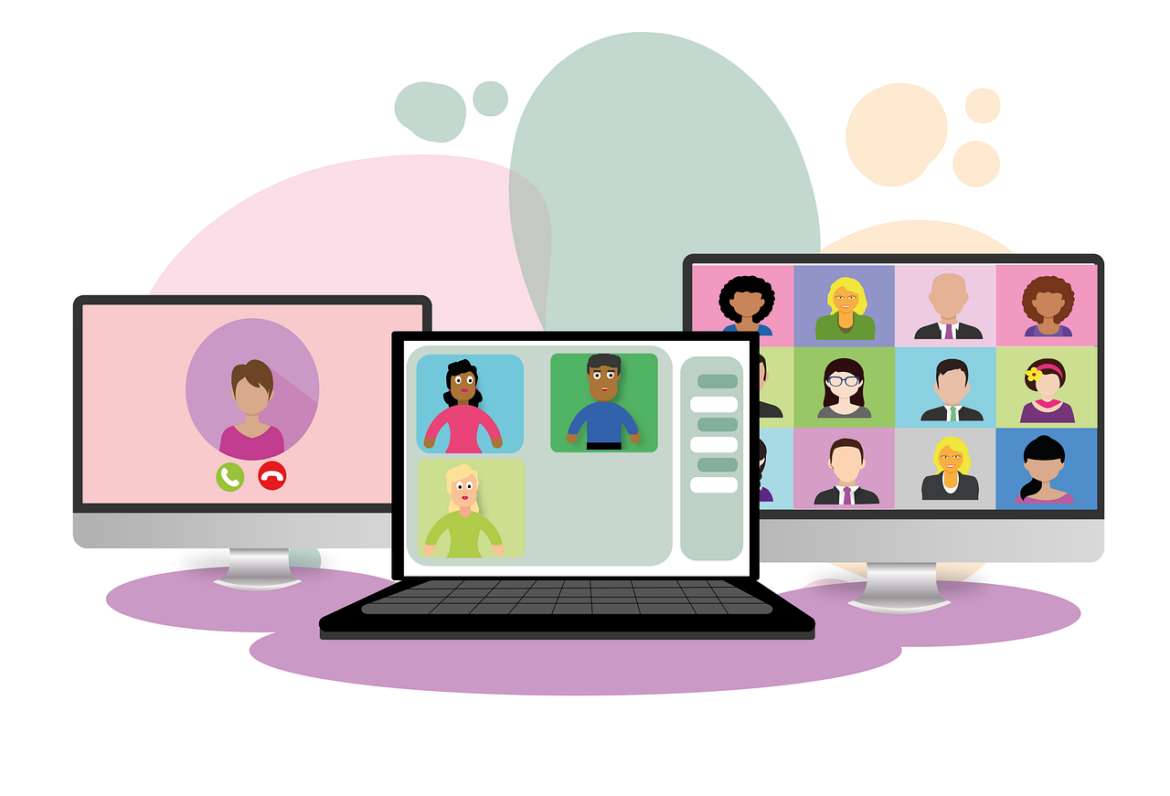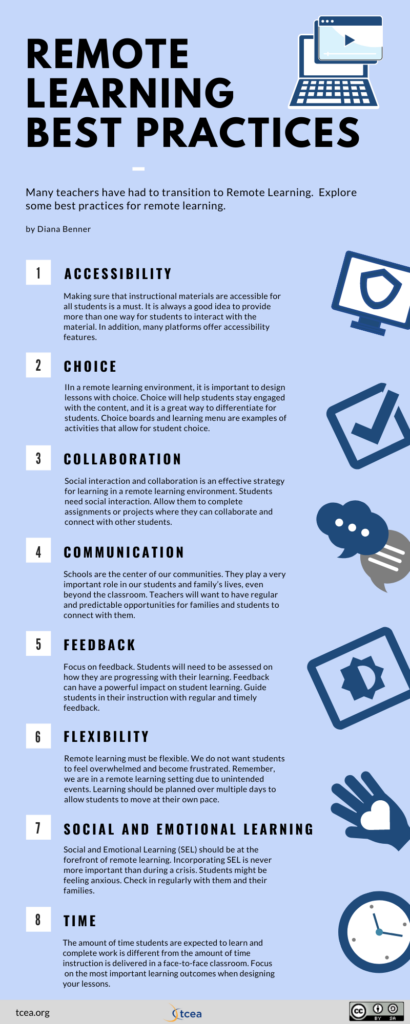Many teachers had to transition to remote learning with no advance notice or preparation earlier this year. Some are now planning for remote learning in the fall when we return to school. It is important to remember that remote learning refers to a class that intends to meet face-to-face in a traditional format. but might be transitioned or started online due to unforeseen circumstances. Let’s take a look at a few best practices for remote learning.
Accessibility
Making sure that instructional materials are accessible for all students is a must. It is always a good idea to provide more than one way for students to interact with the material. In addition, many platforms offer accessibility features. To learn more about accessibility, check out some of these resources.
Choice
In a remote learning environment, it is important to design lessons with choice. Choice will help students stay engaged with the content, and it is a great way to differentiate for students. Choice boards and learning menus are examples of activities that allow for them to be in control of their own learning.
Collaboration
Social interaction and collaboration is an effective strategy for learning in a remote environment. Students need social interaction. Allow them to complete assignments or projects where they can collaborate and connect with other students.
Communication
Schools are the center of our communities and thus play a very important role in our students’ and family’s lives, even beyond the classroom. When transitioning to a remote learning setting, teachers should have regular and predictable opportunities for families and students to connect with them.
Feedback
Focus on feedback. Students will need to be assessed on how they are progressing with their learning. Feedback can have a powerful impact on student learning. Guide students in their instruction with regular and timely feedback.
Flexibility
Remote learning must be flexible. We do not want students to feel overwhelmed and become frustrated. Remember, we are in a remote learning setting due to unintended events. Learning should be planned over multiple days to allow students to move at their own pace.
Social and Emotional Learning
Social and Emotional Learning (SEL) should be at the forefront of remote learning. Incorporating SEL is never more important than during a crisis as students might be feeling anxious. Check in regularly with them and their families.
Time
The amount of time students are expected to learn and complete work is different from the amount of time instruction is delivered in a face-to-face classroom. Students will not be spending the traditional hours or the same amount of time on school work as when they are in a physical classroom. Focus on the most important learning outcomes when designing your lessons.
If you would like to explore these best practices more in detail, be sure to check out our Remote Learning Educator Certification online course. In addition, we have created mini-sessions that are available for you to view that focus on remote learning tips and tricks. If you have additional best practices you think should be added to the list above, please comment below.



2 comments
LOOKS VERY PROMISING AND IMPRESSIVE. ALL THE BEST!
Amazing and helpful